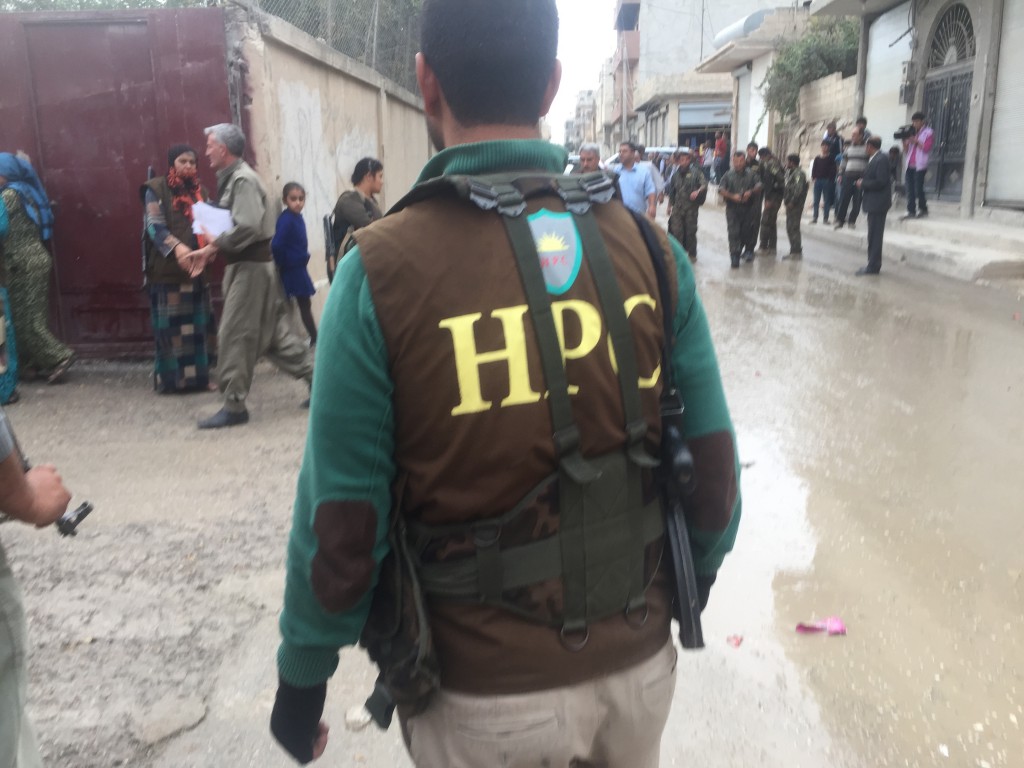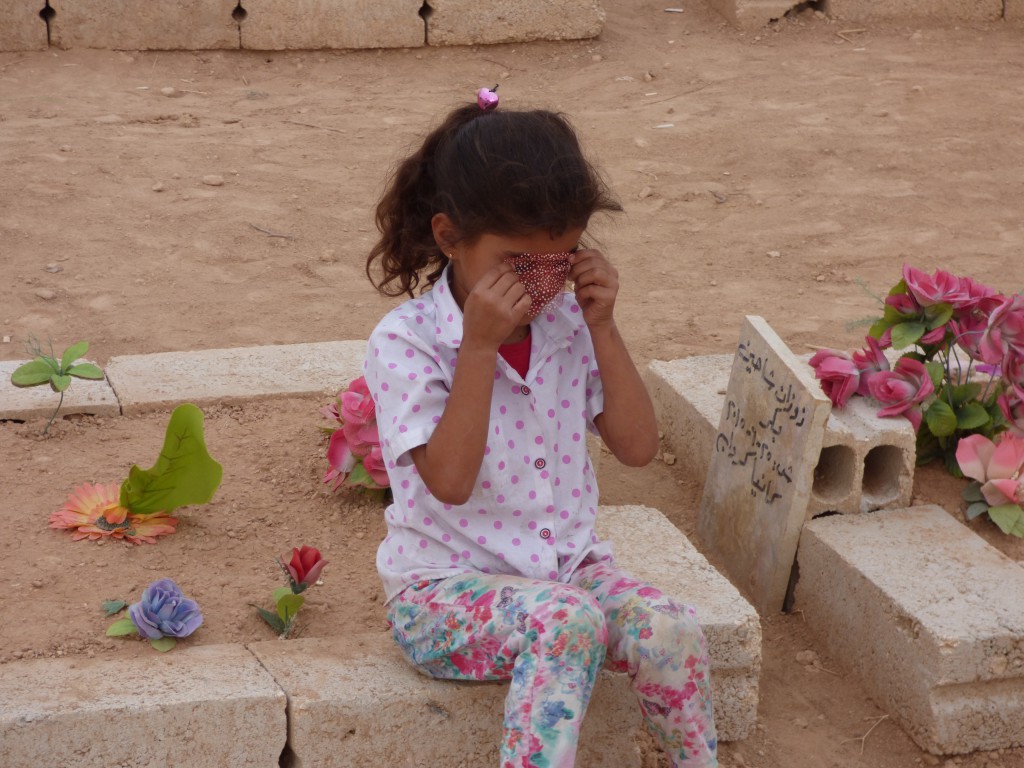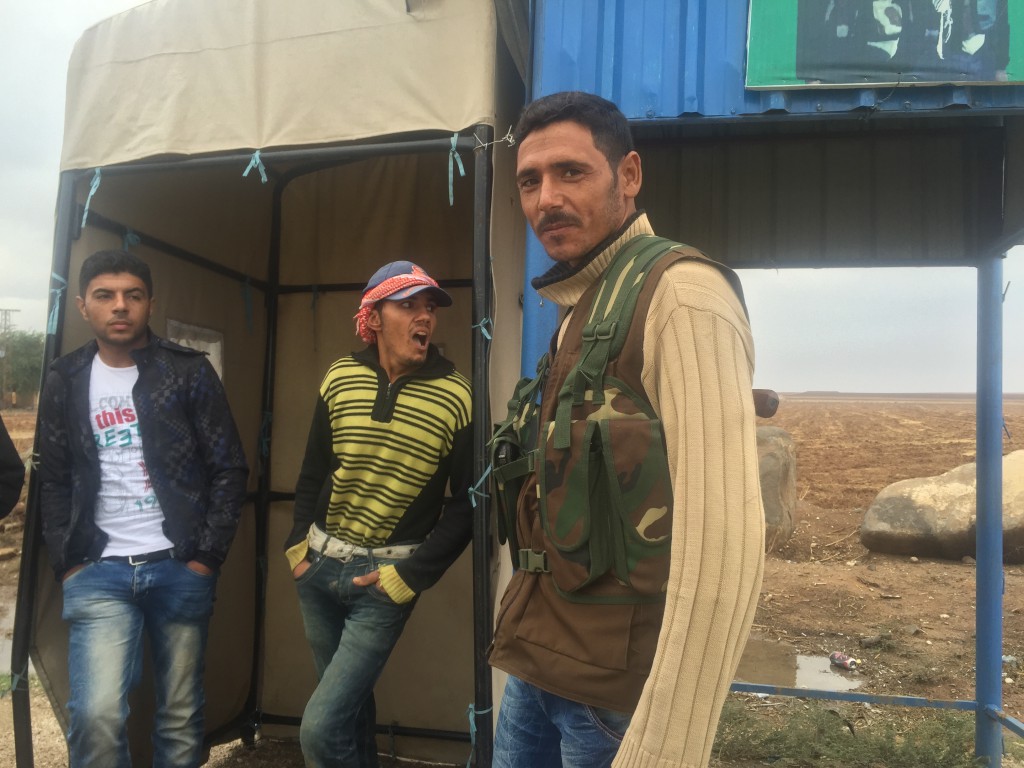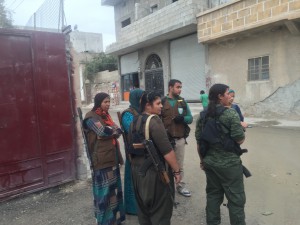 El Errante
El Errante
There is a small cemetery on the side of the 712 highway as it crawls its way westward out of Kobane. There are roughly 100 graves there, they are well-kept, some sprout plastic flowers, and small mementos can be seen that have been placed atop others. The cemetery is marked by a sign and a large poster of the martyrs buried there. This poster, however, is markedly different than most YPG/J martyr remembrances; this one includes pictures of old folks, newlyweds, teenagers and the very young. For this cemetery is dedicated solely to those who lost their lives during the massacre of June 25, 2015. On that night some 100 Daesh, disguised as Asayîş, infiltrated the Turkish border, exploded several car bombs and then began to systematically massacre anyone they could lay their hands on. An estimated 233 civilians were killed over the ensuing three days, including two of the driver’s uncles. Which is how I found this place; he had asked for a moment to stop by and tend the graves. I told him of course and asked if he came to the cemetery often.
“Every week,” was his response.
I finally found and met Aram Qamishlo, the HPC Director for Qamishili. The HPC compound where he works sits right behind the YPG barracks described in Dispatch Five. The HPC headquarters is yet another enclosed compound, a former storage area for the moribund Chemins de Fer Syriens railway system. According to Aram, the idea of formal defense units directly responsible to, and for the defense of, the communes had long been part of TEV-DEM discussions. The policy to further decentralize militia and security responsibilities with the concomitant devolution of power into the communes being the overarching priority. Significantly however, Aram states that the final push for the HPC came not from above, but from the communes. Prior to the HPC, each commune had implemented some level of security force, comprised of their own members and responsible to the commune council. This proved insufficient so the Qamishli communes requested that the Cizere Executive Council designate a name for the units, provide weapons training, a uniform, and outline specific duties for the militia. In March of 2015, and as a result of the relative stability of the region, the first units of the Hêza Parastina Cewherî (HPC, Self Defense Forces) began training and deploying in Cizere Canton, specifically Qamishli.
The driver, Mohammed the translator, and me wander among the graves. There are others here too, family, friends. They tend the graves of their loved ones. Hands, earth, sadness. One or two small boys play at tag while their parents clean the dry mounds of paper and rubbish. The graves are a sphinx. All of the headstones are in Arabic, which I can’t read. Even the dates are undecipherable. I continue walking, grave to grave, row to row, then one catches my eye. The dates and name are in Latinized script. This person was named Nujiyan Gever and s/he was born on October 14, 2014 and died on July 2, 2015. I count the months in my head quickly — a baby. Nine months old. Mohammed reaches out and takes my arm as I crouch to my knees. In my mind the simple phrase — a baby, Nujiyan Gever, nine months old — repeats over and over. I begin to feel unwell.
The HPC, like the YPG/J has developed innovative protocols for recruitment, training, and deployment. Some facts…
1) Each commune elects two persons to participate in the HPC. In practice there are far more volunteers for the HPC than it could possibly train and supply.
2) HPC recruit training lasts 17 days.
3) TEV-DEM and YPG/J take equal responsibility for training the HPC volunteers. The militias train on weapons and tactics and TEV-DEM train on the ideas of Democratic Confederalism. Both are considered essential for the HPC recruit to accomplish the mission of self defense.
4) As an example of HPC density, the city of Qamishli has a population of about 230,000 and an HPC contingent of 500.
5) Kobane, after the massacre, set out to arm and train HPC volunteers as quickly as possible. Due to the damage of the siege and lack of resources the HPC implementation had lagged behind other priorities. No more. In discussion with my TEV-DEM contact, Mr. Shaif was certain that they would have a full contingent for the city by mid-November of 2015.
 As Aram and I sit and chat I ask what he sees as the most important work the HPC will do. He begins slowly, “In Marxism the people were always betrayed by the party, by the army, and what was left was dictatorship, war. In our system the arming of the people, through the YPG, through the Asayîş, through the HPC, guarantees that this will not happen. The HPC are one more guarantee for the success of the Revolution. So when we say protect the people we mean not just against Daesh, but anyone.”
As Aram and I sit and chat I ask what he sees as the most important work the HPC will do. He begins slowly, “In Marxism the people were always betrayed by the party, by the army, and what was left was dictatorship, war. In our system the arming of the people, through the YPG, through the Asayîş, through the HPC, guarantees that this will not happen. The HPC are one more guarantee for the success of the Revolution. So when we say protect the people we mean not just against Daesh, but anyone.”
I am floored by his statement and say,” You know your history, Durruti and Bakunin.”
He smiles and that was just enough.
The driver is finishing tending to his uncle’s graves. Mohammed and I stand by the minivan. I smoke and watch the families as they walk through the cemetery. The driver rises and walks towards us. I want to tell him I’m sorry, express sympathy, say something.
”I hope this never happens again,” is all I can manage. He is silent. We climb back in the minivan drive and he kicks over the engine. The three of us look off at the graves of the old, the young, the newlyweds. The minivan then groans onto the 712, and is gone.
(Note: In my drive from Semelka at the border to Amuda all the checkpoints were Asayîş, by my return some week or so later three of the checkpoints were run by men and women wearing the brown vest of the HPC. Perhaps coincidence, perhaps not. My guess is the HPC will have a very important role as the Revolution matures and expands. In one stroke TEV-DEM may have addressed an issue that has plagued anarchist insurrections since the Paris Commune, how to maintain power, in the form of a militia, at the block and neighborhood level. Time will tell…)


3 comments for “Rojava Dispatch Six: Innovations, the Formation of the Hêza Parastina Cewherî (HPC)”